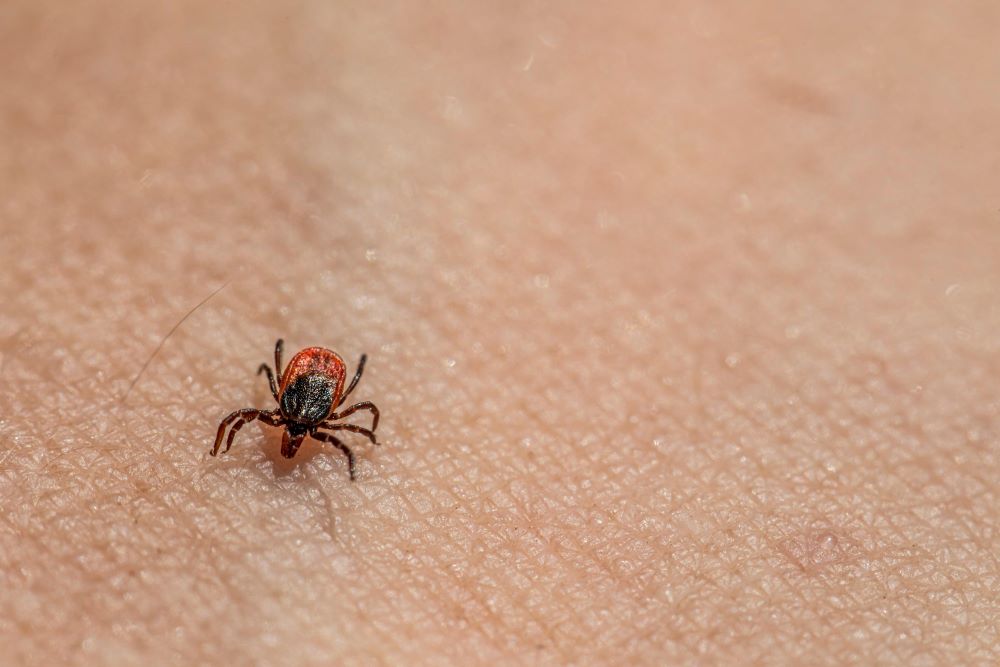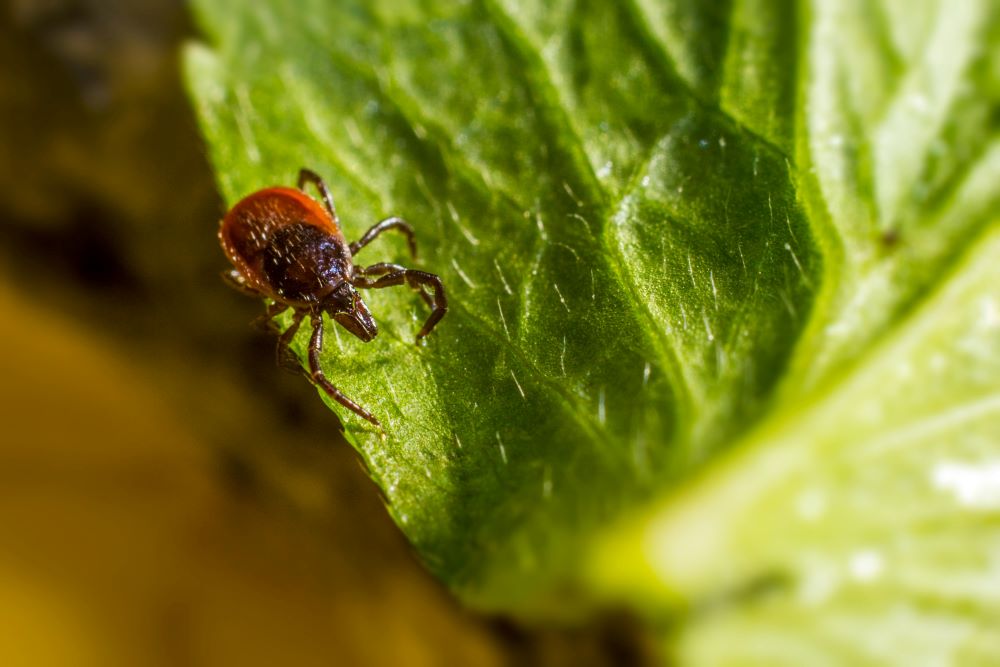With tick-borne diseases on the rise, researchers draw attention to the possibility of ticks carrying multiple bacteria-induced illnesses.
A recent study, led by researchers at Penn State Health Milton S. Hershey Medical Center and Penn State College of Medicine and published in journal Open Forum Infectious Diseases, focused on the rising rates of babesiosis, a tick-borne parasitic disease, in the United States. The findings revealed a steady increase in cases, averaging 9% growth annually in the seven-year span between 2015 and 2022. Babesiosis, often referred to as “American malaria,” is caused by black-legged ticks carrying the Babesia parasite, which is transmitted through their bites. Like malaria, babesiosis infects red blood cells and can result in flu-like symptoms. Although some individuals may not have any symptoms at all, others—especially vulnerable populations, including older adults or those with weakened immune systems—can experience severe complications or even death.
The study also found that nearly 40% of babesiosis patients were co-infected with diseases these ticks were carrying, particularly Lyme disease. These findings are significant for healthcare professionals, as they underscore the need for heightened awareness of possible co-infections in patients presenting with tick-borne illnesses. Ticks carry multiple bacteria, and a single bite could lead to infections with diseases like Lyme, anaplasmosis, or ehrlichiosis. The research suggests that clinicians should be particularly vigilant in identifying and treating co-infections among patients diagnosed with babesiosis.
The researchers noted that climate change might be playing a role in the growing prevalence of babesiosis. Factors such as temperature, humidity, and rainfall have shifted the population and distribution of ticks, as well as the animals—like deer—that serve as reservoir hosts for these parasites. This has resulted in the expansion of tick populations across broader geographical areas, extending the risk of infection to new regions. Most cases of babesiosis continue to be concentrated in the Northeastern and Midwestern United States, peaking during the summer months.

Using data from over 250 million individuals across the U.S. via the TriNetX national database, the researchers identified 3,521 cases of babesiosis over the seven-year period studied. They also found that co-infections, particularly with Lyme disease, were present in a higher percentage of cases than previously reported, with 41% of co-infected patients testing positive for Lyme disease. Smaller percentages of patients were co-infected with the bacteria responsible for anaplasmosis and ehrlichiosis, at 3.7% and 0.3%, respectively.
When the researchers analyzed the data to determine whether co-infections led to worse outcomes, they found that, contrary to what might be expected, patients infected by ticks carrying both babesiosis and Lyme disease did not have higher mortality rates compared to those with babesiosis alone. This finding raised questions about the interaction between different tick-borne diseases and their combined effects on the immune system. One possibility is that the presence of multiple infections could somehow boost the immune response, helping the body better fight the infections. However, further research is needed.
The team also noted that patients with co-infections were more likely to be prescribed doxycycline, an antibiotic commonly used to treat Lyme disease, anaplasmosis, and ehrlichiosis. Interestingly, the researchers observed better outcomes in patients treated with doxycycline, even though it is not the standard treatment for babesiosis. The typical treatment for babesiosis includes a combination of azithromycin and atovaquone, with more severe cases sometimes requiring red blood cell exchange. However, the exact benefit of red blood cell exchange remains uncertain. The study’s findings suggest that doxycycline might also be effective in treating patients impacted by ticks carrying babesiosis, raising important questions for future research on treatment protocols. The team stated the importance of performing future studies examining the prevalence and treatment of babesiosis and other tick-borne diseases as these cases are on the rise.
Sources:
Study highlights rising rates of tick-borne parasitic disease in the United States


Join the conversation!